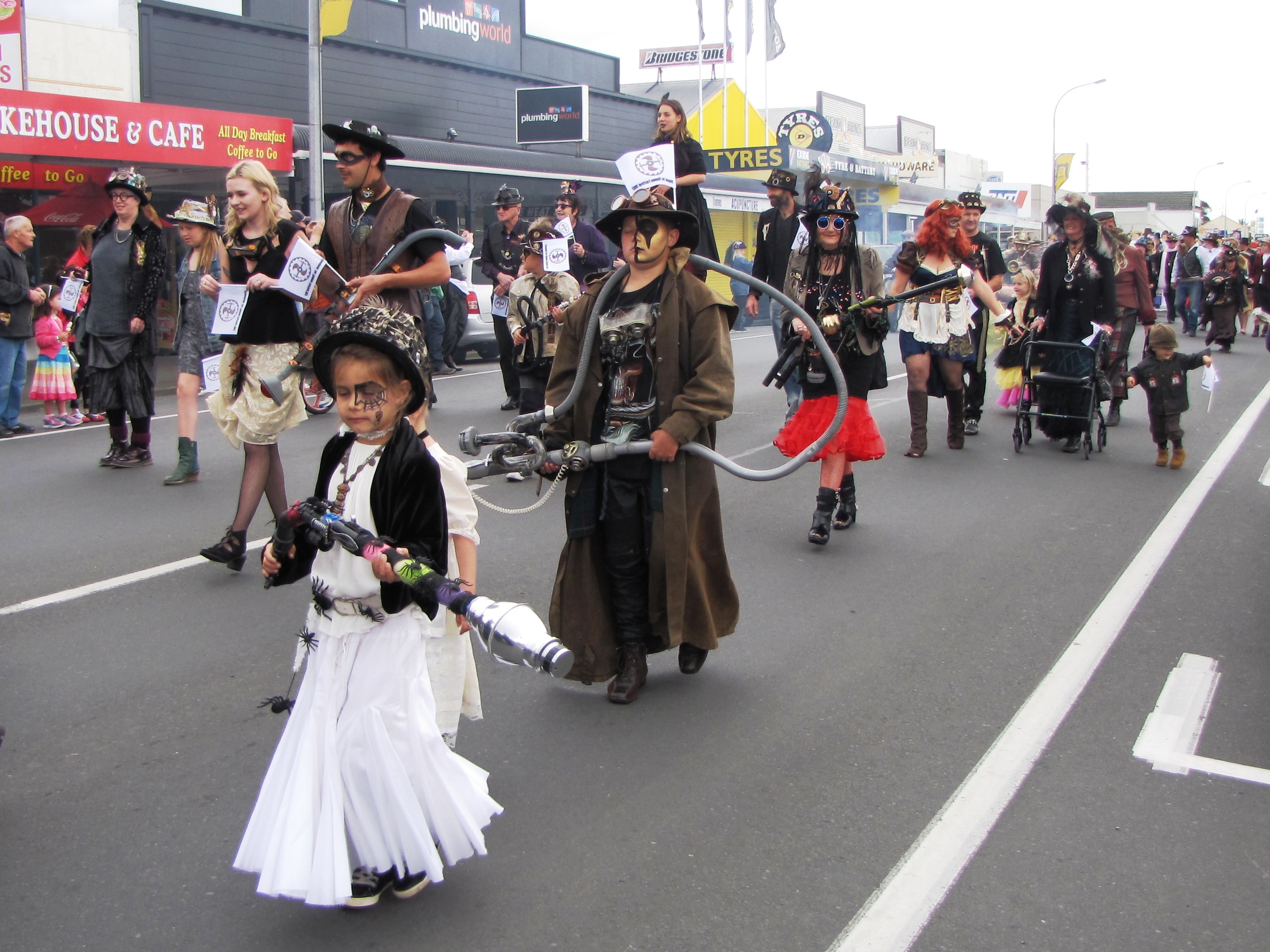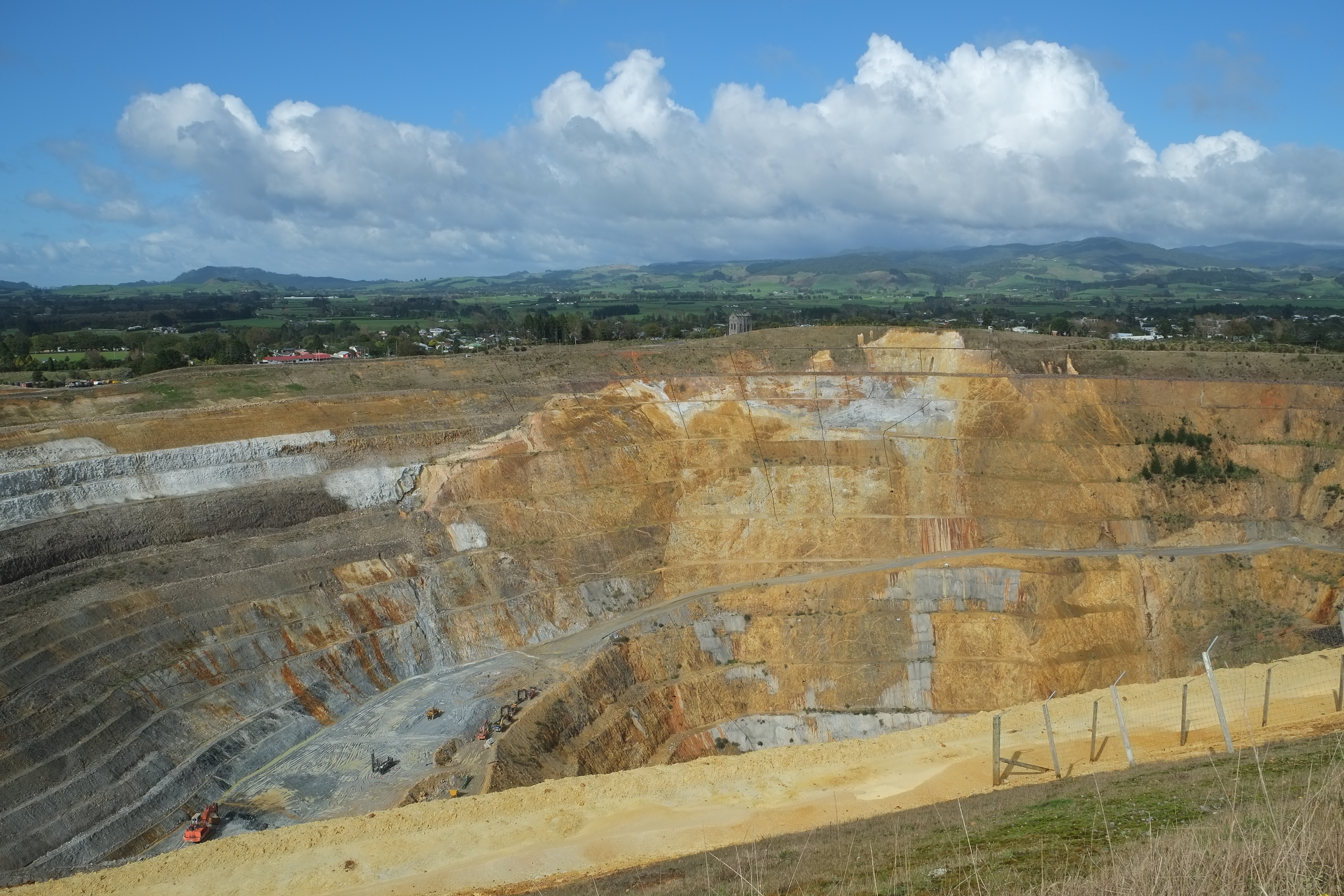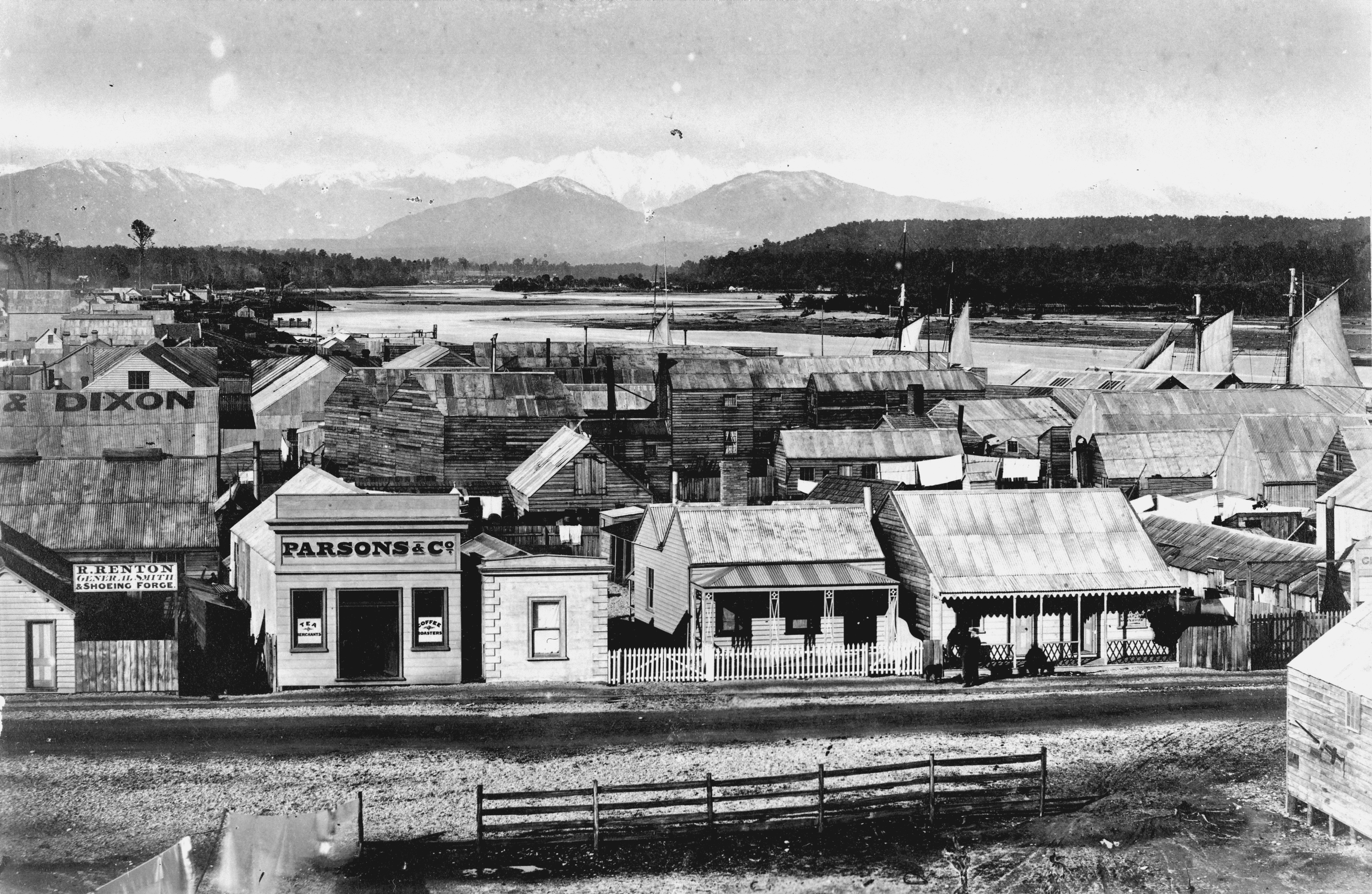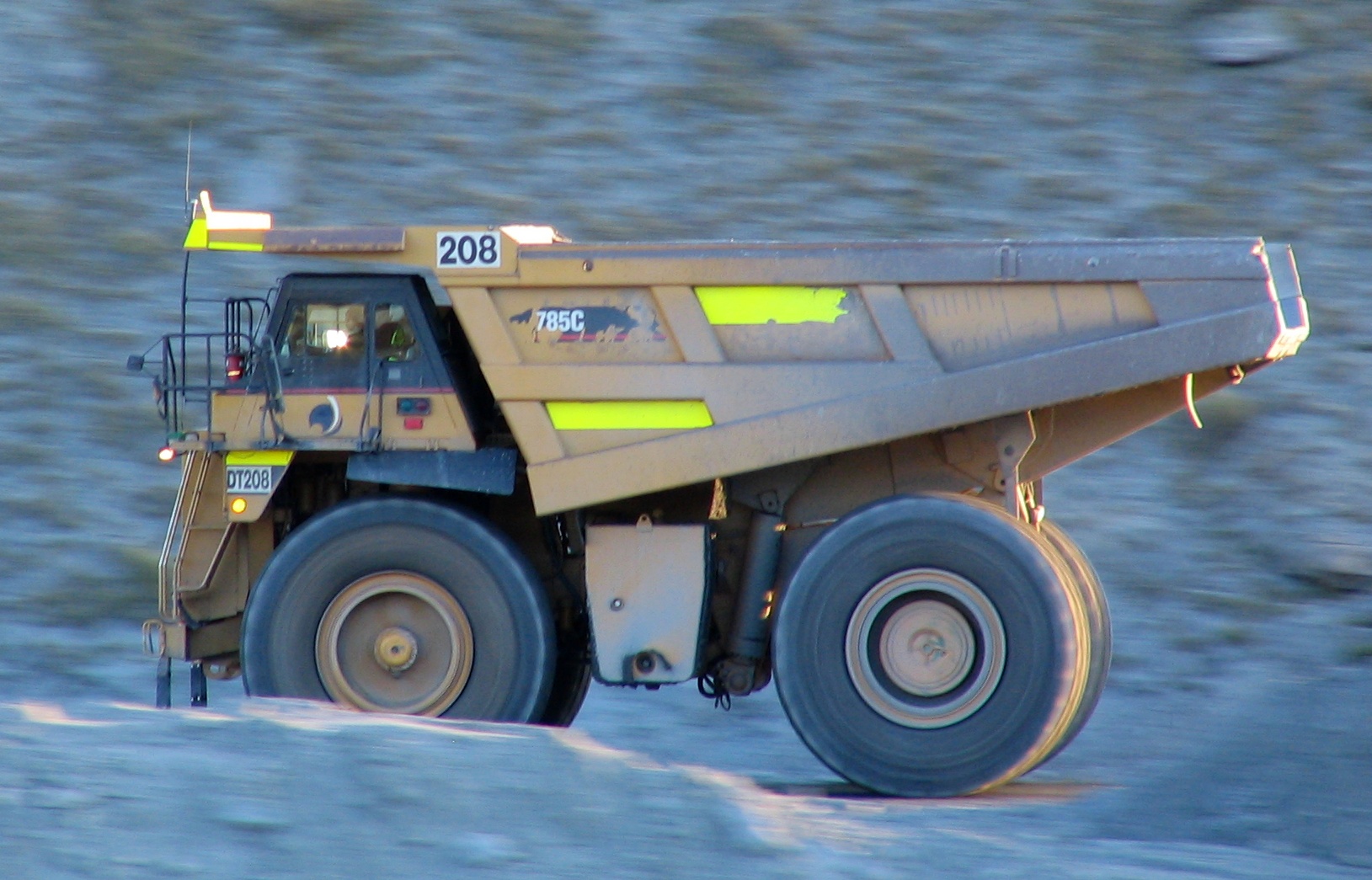|
Thames-Coromandel Gold Rush
The Coromandel Gold Rushes on the Coromandel Peninsula and around the nearby towns of Thames and Waihi in New Zealand in the nineteenth century were moderately successful. Traces of gold were found about 1842. A small find was made near Coromandel in 1852; and a larger find in August 1867 when there was a modest rush. But Thames acquired a reputation for speculative holding of unworked ground despite regulations designed to check it, and some miners left for Queensland. Most of the gold was in quartz reefs rather than in more accessible alluvial deposits and had to be recovered from underground mines and extracted using stamping batteries. The decline in New Zealand gold production was halted in the 1890s. The Waihi Mine had been discovered in 1878, but was not seriously worked until 1887, when English capital set up a cyanide process plant. Hence, with these mines and gold dredges extracting gold from the Molyneaux River in Otago, the gold production of New Zealand again exceeded ha ... [...More Info...] [...Related Items...] OR: [Wikipedia] [Google] [Baidu] |
Coromandel Peninsula
The Coromandel Peninsula ( mi, Te Tara-O-Te-Ika-A-Māui) on the North Island of New Zealand extends north from the western end of the Bay of Plenty, forming a natural barrier protecting the Hauraki Gulf and the Firth of Thames in the west from the Pacific Ocean to the east. It is wide at its broadest point. Almost its entire population lives on the narrow coastal strips fronting the Hauraki Gulf and the Bay of Plenty. In clear weather the peninsula is clearly visible from Auckland, the country's biggest city, which lies on the far shore of the Hauraki Gulf, to the west. The peninsula is part of the Thames-Coromandel District of the Waikato region. Origin of the name The Māori name for the Coromandel comes from the Māori legend of Māui and the Fish, in which the demigod uses his hook to catch a great fish from the depths of te Moana-Nui-a-Kiwa (The Pacific Ocean). ''Te Tara-O-Te-Ika-A-Māui'' means 'The spine of Māui's fish'. The spine can be understood to be the C ... [...More Info...] [...Related Items...] OR: [Wikipedia] [Google] [Baidu] |
Thames, New Zealand
Thames () ( mi, Pārāwai) is a town at the southwestern end of the Coromandel Peninsula in New Zealand's North Island. It is located on the Firth of Thames close to the mouth of the Waihou River. The town is the seat of the Thames-Coromandel (district), New Zealand, Thames-Coromandel District Council. The Māori people, Māori iwi are Ngāti Maru (Hauraki), Ngāti Maru, who are descendants of Marutuahu's son Te Ngako. Ngāti Maru is part of the Ngati Marutuahu confederation of tribes or better known as Hauraki Iwi. Thames had an estimated population of 15,000 in 1870, but this declined to 4,500 in 1881, and it has increased modestly since. It is still the biggest town on the Coromandel. Until 2016, a historical Oak, oak tree that was planted by Governor George Grey stood on the corner of Grey and Rolleston streets. Demographics Thames covers and had an estimated population of as of with a population density of people per km2. Thames had a population of 7,293 at the 2018 Ne ... [...More Info...] [...Related Items...] OR: [Wikipedia] [Google] [Baidu] |
Waihi
Waihi is a town in Hauraki District in the North Island of New Zealand, especially notable for its history as a gold mine town. The town is at the foot of the Coromandel Peninsula, close to the western end of the Bay of Plenty. The nearby resort town of Waihi Beach, ten kilometres to the east, is often regarded as the westernmost point of the Bay of Plenty region. To the west are the hills of the Kaimai Ranges. Road access from this direction is through the winding Karangahake Gorge road. Waihi has a warm and temperate climate but unusually high rainfall for New Zealand's east coast with an average annual rainfall of 2147 mm. Demographics Waihi covers and had an estimated population of as of with a population density of people per km2. Waihi had a population of 5,403 at the 2018 New Zealand census, an increase of 741 people (15.9%) since the 2013 census, and an increase of 783 people (16.9%) since the 2006 census. There were 2,223 households, comprising 2,604 males ... [...More Info...] [...Related Items...] OR: [Wikipedia] [Google] [Baidu] |
Golden Cross Mine
Golden means made of, or relating to gold. Golden may also refer to: Places United Kingdom *Golden, in the parish of Probus, Cornwall *Golden Cap, Dorset *Golden Square, Soho, London *Golden Valley, a valley on the River Frome in Gloucestershire *Golden Valley, Herefordshire United States *Golden, Colorado, a town West of Denver, county seat of Jefferson County *Golden, Idaho, an unincorporated community *Golden, Illinois, a village *Golden Township, Michigan *Golden, Mississippi, a village *Golden City, Missouri, a city *Golden, Missouri, an unincorporated community *Golden, Nebraska, ghost town in Burt County *Golden Township, Holt County, Nebraska *Golden, New Mexico, a sparsely populated ghost town *Golden, Oregon, an abandoned mining town *Golden, Texas, an unincorporated community *Golden, Utah, a ghost town *Golden, Marshall County, West Virginia, an unincorporated community Elsewhere *Golden, County Tipperary, Ireland, a village on the River Suir *Golden Vale, Munster, ... [...More Info...] [...Related Items...] OR: [Wikipedia] [Google] [Baidu] |
Martha Mine
The Martha Mine is a gold mine in the New Zealand town of Waihi. Since July 2015 it has been owned by Australian-based OceanaGold. History William Nicholl marked out a claim, calling it "Martha" after a family member. Several smaller claims were later merged to form the Martha Company. By 1882 the first battery to break gold-bearing rock was in operation. The Martha Mine eventually grew into one of the world's most important gold and silver mines, after industrial cyanide processes made recovering gold from the low-grade ores easier. Waihi prospered with the mine, by 1908 being the fastest-growing town in the Auckland Province, three times the size of Hamilton.Waihi and Gold (from the 'History & Heritage' section of the 'Waihi.org' website) In 1935 New Zealand gold output peaked during the depression, with tw ... [...More Info...] [...Related Items...] OR: [Wikipedia] [Google] [Baidu] |
Charles Ring (gold Prospector)
Charles Ring (1832–1906) was a colonial settler who, despite claims that others had been successful before him, is credited with being the first European to discover significant sources of payable gold in New Zealand in 1852. From a young age Ring worked in business and as a farmer both in Australia and New Zealand. He later spent time as a gold prospector in California after which he returned to New Zealand, and became actively involved in promoting the importance of gold mining in the country. In 1852 Ring claimed a reward for discovering gold in Coromandel, and while his claim was recognised, he did not receive the full reward and is said to have died feeling unappreciated for his contribution to the gold industry. During his time as a farmer and gold prospector, Ring was involved in regular, and largely respectful and productive relationships with the local Māori whose lands were protected under the recently signed Treaty of Waitangi. Early life Ring was born in 1832 in ... [...More Info...] [...Related Items...] OR: [Wikipedia] [Google] [Baidu] |
Bruce Bay
Bruce Bay is a bay and settlement in South Westland, New Zealand on the Tasman Sea. It is located on State Highway 6, northeast of Haast and southwest of Fox Glacier. The small settlement of Bruce Bay is located just south of the mouth of Mahitahi River. The bay is a nesting ground for the Fiordland crested penguin, and endemic Hector's dolphins and southern right whales can be observed from the shore on occasion. Some of the bush around the bay has been cleared for farming, and quartz stones can be found on the beach. History Māori oral tradition According to the oral tradition of local Māori, Bruce Bay was where the explorer and trickster Māui first landed in New Zealand before fishing up the North Island. Before landing, Māui had to kill the two taniwha keeping guard on either side of the bay. This feat is recalled in the name of the headland at the western end of the bay, Heretaniwha (literally meaning "to tie up the monster"). Early Māori settlement There is archa ... [...More Info...] [...Related Items...] OR: [Wikipedia] [Google] [Baidu] |
Hokitika
Hokitika is a town in the West Coast region of New Zealand's South Island, south of Greymouth, and close to the mouth of the Hokitika River. It is the seat and largest town in the Westland District. The town's estimated population is as of . On a clear day Aoraki / Mount Cook can clearly be seen from Hokitika's main street. Toponymy The name Hokitika translates from Māori as "to return directly" (from , 'to return', and , 'direct'). According to the Ministry for Culture and Heritage, the name comes from when a band of Ngāi Tahu warriors in search of greenstone were about to attack Ngāti Wairangi . The chief of the invaders drowned while trying to cross the Hokitika River, and the leaderless (army) then returned directly to their own home. History The land where Hokitika stands was purchased in 1860 from Māori when Poutini Ngāi Tahu chiefs signed the Arahura Deed. This was the sale of the whole of the West Coast region, apart from small areas reserved for Māori ... [...More Info...] [...Related Items...] OR: [Wikipedia] [Google] [Baidu] |
Mining In New Zealand
Mining in New Zealand began when the Māori quarried rock such as argillite in times prior to European colonisation. Mining by Europeans began in the latter half of the 19th century. New Zealand has abundant resources of coal, silver, iron ore, limestone and gold. It ranked 22 in the world in terms of iron ore production and 29th in gold production. The total value of mineral production in New Zealand was $1.5 billion in 2006 (excluding oil and gas). The most important metallic minerals produced are gold (10.62 tonnes), silver (27.2 tonnes) and titanomagnetite ironsand (2.15 million tonnes). A 2008 report estimated that the unexploited resources of just seven core minerals (including gold, copper, iron and molybdenum) totalled around $140 billion in worth. The mining sector makes a significant contribution to the New Zealand economy. In 2004 the value of production from mining (excluding oil and gas) was $1,142 million, or just under 1% of gross domestic product. In 2017 mining co ... [...More Info...] [...Related Items...] OR: [Wikipedia] [Google] [Baidu] |
Coromandel Watchdog
Coromandel Watchdog is an environmental organisation lobbying in opposition to mining on the Coromandel Peninsula in New Zealand. The Coromandel Peninsula is an area of high scenic values due to the presence of the original forest cover and a coastline that is popular for recreation. Goldmining has been carried out since the late 19th century. To the south of the peninsula the Martha Mine at Waihi is still operating. Coromandel Watchdog began protests and lobbying in the 1970s against the activities of mining companies. It was instrumental in having conservation land on the Coromandel Peninsula protected under Schedule 4 of the Crown Minerals Act. In 2009, Watchdog was reactivated after a period of inactivity. The National-led Government is proposing the removal of up to 2,500 hectares of Coromandel land from Schedule 4 and Coromandel Watchdog have publicly come out and stated that they will fight the current proposals. See also *Environment of New Zealand *Mining in New Zeal ... [...More Info...] [...Related Items...] OR: [Wikipedia] [Google] [Baidu] |
Diggers, Hatters & Whores
''Diggers, Hatters & Whores'' is a 2008 history book about gold rushes in New Zealand, written by Stevan Eldred-Grigg. The book's thesis is that the rushes presented a challenge to the economic status quo in New Zealand, which was at the time politically and economically controlled by farmer politicians. The book details the social and economic factors that drove people, both New Zealanders and foreigners, to dig for gold, and examines the degree to which they were able to fulfil their goals of social and economic independence. The book was used by Booker Prize winning author Eleanor Catton as research material for her novel, ''The Luminaries ''The Luminaries'' is a 2013 novel by Eleanor Catton. Set in New Zealand's South Island in 1866, the novel follows Walter Moody, a prospector who travels to the West Coast settlement of Hokitika to make his fortune on the goldfields. Instead ...''. References 2008 non-fiction books Works about the history of mining Gold mini ... [...More Info...] [...Related Items...] OR: [Wikipedia] [Google] [Baidu] |
New Zealand Gold Rushes
New is an adjective referring to something recently made, discovered, or created. New or NEW may refer to: Music * New, singer of K-pop group The Boyz Albums and EPs * ''New'' (album), by Paul McCartney, 2013 * ''New'' (EP), by Regurgitator, 1995 Songs * "New" (Daya song), 2017 * "New" (Paul McCartney song), 2013 * "New" (No Doubt song), 1999 *"new", by Loona from '' Yves'', 2017 *"The New", by Interpol from ''Turn On the Bright Lights'', 2002 Acronyms * Net economic welfare, a proposed macroeconomic indicator * Net explosive weight, also known as net explosive quantity * Network of enlightened Women, a conservative university women's organization * Next Entertainment World, a South Korean film distribution company Identification codes * Nepal Bhasa language ISO 639 language code * New Century Financial Corporation (NYSE stock abbreviation) * Northeast Wrestling, a professional wrestling promotion in the northeastern United States Transport * New Orleans Lakefront Ai ... [...More Info...] [...Related Items...] OR: [Wikipedia] [Google] [Baidu] |





